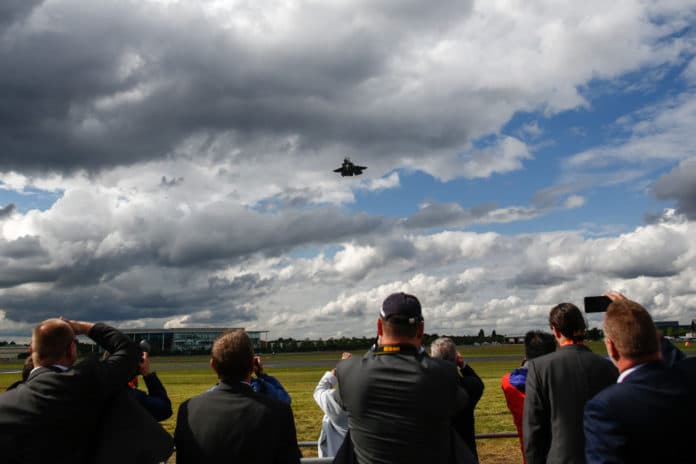Lockheed Martin’s next-generation F-35 jet could be deployed on combat missions this year if requested by regional commanders, according to the general responsible for declaring the system war-ready.
“The minute I declare initial operational capability, if the combatant commander calls me up and says they needed F-35s, I would send them,” Gen. Herb ‘Hawk’ Carlisle, head of the Air Combat Command, told reporters Wednesday after a congressional hearing.
Such a determination is likely to come “sooner rather than later” in an August-to-December window that the service has established, Carlisle said. When that happens, “I would explain its capabilities in its current state” of software and then deploy the fighter if asked, he added.
Carlisle and other officials are reviewing the latest data from recent U.S. deployments and exercises needed to evaluate whether the Air Force, which is purchasing 1,763 F-35s, can make the declaration. That decision could come as early as Aug. 5. The Air Force’s version of the F-35 initially will carry either two 2,000-pound GPS-guided bombs or two 500-pound laser-guided weapons, plus two air-to-air missiles.
The F-35 is a flying computer, with more than 8 million lines of software code. At a projected cost of $379 billion for a fleet of 2,443 aircraft, it’s also the costliest U.S. weapon system and one of the most closely scrutinized. The plane is built in Fort Worth’s Lockheed Martin plant.
Carlisle said there are no known technical issues preventing a so-called IOC declaration.
The Air Force doesn’t have a recent track record of deploying combat planes in missions so soon after a combat capability is declared. The B-1B bomber, for example, first flew missions in December 1998 against an Iraqi Republican Guard target, about 12 years after it was declared ready. Lockheed’s F-22 stealth fighter flew its first combat missions in September 2014 against Islamic State targets, about nine years after it was deemed combat-ready.
Aside from the potential for a combat mission by a few planes, Carlisle said that within the next 18 months he’s likely to fly F-35s on no-notice deployments to Europe and the Pacific as a message to allies and adversaries.
“We need to” demonstrate “this rapid ability to move airplanes” when the U.S. doesn’t have jets permanently based in a location. In April, the Air Force flew 12 F-22 fighters without warning to Lakenheath, England, from Tyndall Air Force Base in Florida for a training mission, he said.
“As soon as I get them operational I’d like to do that with the F-35s as well, to demonstrate that I can move those airplanes anywhere I need to as rapidly as I can to support combatant commanders’ needs — whether it’s in a peacetime training environment, messaging to potential adversaries or if we ever had to, in the face of conflict.”






